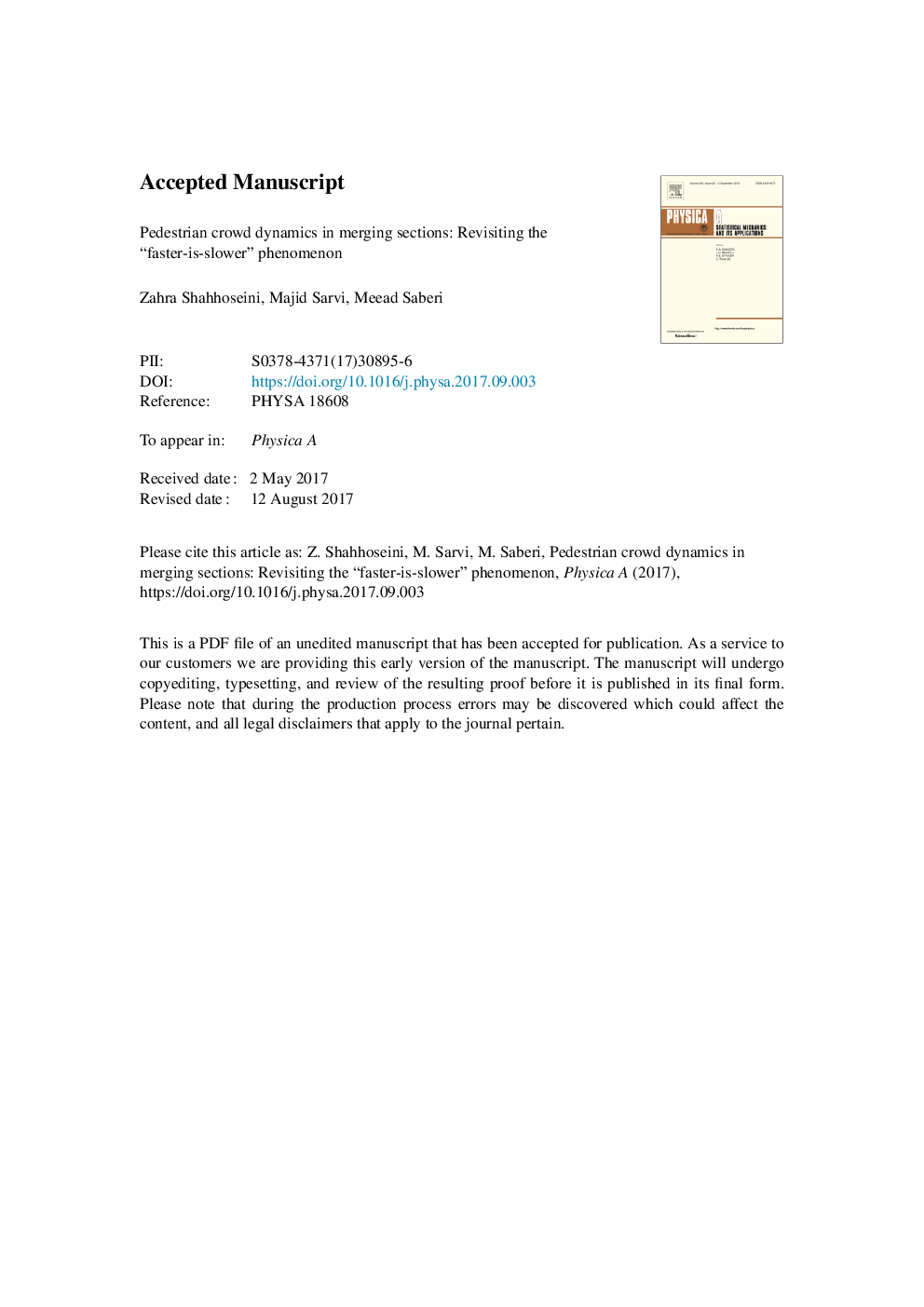| کد مقاله | کد نشریه | سال انتشار | مقاله انگلیسی | نسخه تمام متن |
|---|---|---|---|---|
| 5102359 | 1480082 | 2018 | 20 صفحه PDF | دانلود رایگان |
عنوان انگلیسی مقاله ISI
Pedestrian crowd dynamics in merging sections: Revisiting the “faster-is-slower” phenomenon
دانلود مقاله + سفارش ترجمه
دانلود مقاله ISI انگلیسی
رایگان برای ایرانیان
کلمات کلیدی
موضوعات مرتبط
مهندسی و علوم پایه
ریاضیات
فیزیک ریاضی
پیش نمایش صفحه اول مقاله

چکیده انگلیسی
The study of the discharge of active or self-driven matter in narrow passages has become of the growing interest in a variety of fields. The question has particularly important practical applications for the safety of pedestrian human flows notably in emergency scenarios. It has been suggested predominantly through simulation in some theoretical studies as well as through few experimentations that under certain circumstances, an elevated vigour to escape may exacerbate the outflow and cause further delay although the experimental evidence is rather mixed. The dimensions of this complex phenomenon known as the “faster-is slower” effect are of crucial importance to be understood owing to its potential practical implications for the emergency management. The contextual requirements of observing this phenomenon are yet to be identified. It is not clear whether a “do not speed up” policy is universally beneficial and advisable in an evacuation scenario. Here for the first time we experimentally examine this phenomenon in relation to the pedestrian flows at merging sections as a common geometric feature of crowd egress. Various merging angles and three different speed regimes were examined in high-density laboratory experiments. The measurements of flow interruptions and egress efficiency all indicated that the pedestrians were discharged faster when moving at elevated speed levels. We also observed clear dependencies between the discharge rate and the physical layout of the merging with certain designs clearly outperforming others. But regardless of the design, we observed faster throughput and greater avalanche sizes when we instructed pedestrians to run. Our results give the suggestion that observation of the faster-is-slower effect may necessitate certain critical conditions including passages being overly narrow relative to the size of participles (pedestrians) to create long-lasting blockages. The faster-is-slower assumption may not be universal and there may be circumstances where faster is, in fact, faster for evacuees. In the light of these findings, we suggest that it is important to identify and formulate those conditions so they can be disentangled from one another in the models. Misguided overgeneralisations may have unintended adverse ramifications for the safe evacuation management, and this highlights the need for further exploration of this phenomenon.
ناشر
Database: Elsevier - ScienceDirect (ساینس دایرکت)
Journal: Physica A: Statistical Mechanics and its Applications - Volume 491, 1 February 2018, Pages 101-111
Journal: Physica A: Statistical Mechanics and its Applications - Volume 491, 1 February 2018, Pages 101-111
نویسندگان
Zahra Shahhoseini, Majid Sarvi, Meead Saberi,